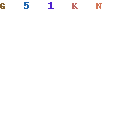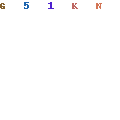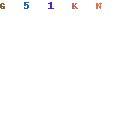
Cloud Series
2010 - 2012
Lamda prints, acrylic face mounted
Exhibited in CCP Declares: On the Nature of Things curated by Dr Kyla McFarlane
Centre for Contemporary Photography, Melbourne, 2012










Amy Marjoram has placed an object on the window of her flat and photographed it, much like André Kertész who placed glass statues against his New York window in his Polaroid series and in which the world was reflected. Marjoram photographs her object, over and over, from inside the room and from outside. It’s a cloud, girlishly scribbled onto the window in black texta and here it has stayed for a year. Behind the window is a brick wall. No glorious view from this window. Precursors to this series were photographs of the sky reflected in windows on the adjacent apartment. Denied a view of sky or landscape, Marjoram drew her own.
Seemingly whimsical, this gesture of scribbling on the dirty window with an oily texta as a pretext and framework for taking photographs is undercut by Marjoram’s astonishing ability to render something marvelous from trivial detail, and to create a tight series. There is nowhere to hide from this self inflicted, proverbial black cloud. Over the year, the cloud is taken on an almost scientific journey through the climactic conditions of the outside world and those of the interior apartment, Marjoram’s camera obsessively recording.
Marjoram’s Cloud series is open to misinterpretation—so glorious are the effects of light and moisture, the restrained palette, the simple pleasure of repetition. Well might you swoon at the effect of the afternoon sun dissecting the cloud in half. But Marjoram’s is not an earnest essay on the effects of light on glass, rainwater or condensation. Her cloud is witty and promiscuous, performing in different ways, like the sentient helium balloon in Albert Lamorisse’s Le Ballon Rouge 1956. For example, when it colludes with the sun and quite astonishingly remains apparent behind a partially closed venetian blind. The cloud sharpens our observations of a miserably small sliver of sky, of a poo-brown apartment building, crappy slim line blinds and a jaunty little light fitting.
Like the cloud with its one foot in the sun and the other in shade, Marjoram undertakes this experiment both with the eye of an observant photographer attending to the world and the formal approach of a conceptualist.
The cloud now takes its leave from the digital world as large, slightly tacky, overly shiny and highly detailed face-mounted prints, bringing with it something of the grungy window.
Over the year, the cloud passed as a shadow across Marjoram’s desk and around the walls of her room, however these have not been included in the series because it is Marjoram’s gift to carefully edit hundreds of images into an incisive series. Marjoram is looking for something in particular.
In the Swanston series, also an intense year-long process, Marjoram is, again, looking for something. Her frame this time is the ignoble spine of Melbourne’s CBD. As a street photographer she is not concerned with mindlessly recording a constant flux from which to mine images, nor is she seeking a particular mood or tempo. Hers is a purposeful, determined and discrete search to find meaning in the trivial and banal. The street is stage for the performance of types, captured without picking off individuals or indulging in portraiture. Distant from her subjects, she neither sentimentalises nor judges their foibles. Above all, Marjoram’s work is optimistic.
Naomi Cass, 2012.